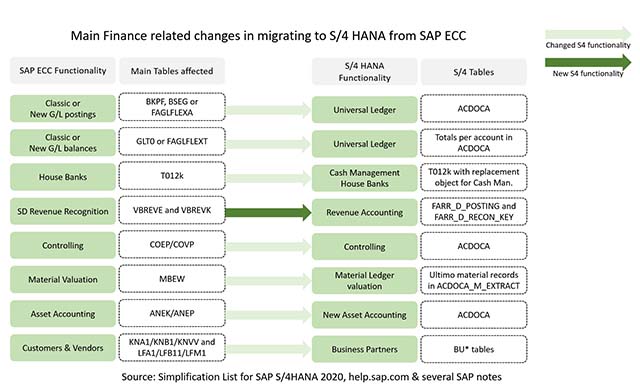SAP S/4HANA Migration from SAP ECC – A Controls Perspective
Key Takeaways
⇨ Primary SAP S/4HANA changes impacting controls with a financial relevance.
⇨ Best practice strategies for pre- and post-migration control activities.
⇨ Recommended control steps to identify inconsistencies and help prove internal and external stakeholders and auditors with peace of mind.
by Ad van Dijke and Hugo Rothengatter, KPMG Advisory | GRC Technology
If you are moving to a new SAP S/4HANA system from SAP ECC also means that existing configuration, transactional, and master data have to be migrated to the new SAP S/4HANA environment. Migrating data completely, in time, and correctly, in a controlled way is of great importance. But it can be a challenge and questions have to be answered. For example: Are sufficient controls in place to ensure correct and complete migration and which you can proof this afterward?
Our recent involvement with SAP S/4HANA migrations identified the following specific challenges:
- Incorrect/incomplete migration of business partners (customer and vendors)
- Mismatched old and new G/L account figures
- The stock totals per materials do not match
This article is intended as a practical guide for SAP audit/control professionals involved in risk and control activities before, during, and after SAP S/4HANA migration from existing SAP ECC systems. We will provide you with insights into the main SAP S/4HANA changes impacting controls with financial relevance and provide you with our better practices for pre-and-post migration control activities.
Please note that this guide is meant for migrations from SAP ECC to SAP S/4HANA using the so-called Brownfield approach (as opposed to Greenfield) which means that the existing SAP ECC data and SAP ECC installation is migrated to SAP S/4HANA.
We want to emphasize the importance of the following control activities while doing the audit/controls work:
- The (pre) migration control activities which should be performed prior to migration in SAP ECC
- The (post) migration control activities in SAP S/4HANA after going live
- The timeliness and documentation of the migration control activities
The expected control activities and our recommendations are included throughout this article. These are based on our practical experience and should be validated by the accountable individuals in the migration – and controls/audit team during the planning, testing, execution, and handover/closure of the project. Please also note that this article is applicable only for SAP S/4HANA versions 1809 or higher. Also, be aware that this article is not meant as a complete migration approach as it only covers the data migration controls perspective.
Main Finance Relevant Functionality Changes in SAP S/4HANA
SAP S/4HANA contains many important changes compared to SAP ECC which are also relevant for controls and audit professionals. Financial relevant changes in SAP S/4HANA include the following enhancements:
- Universal Ledger which integrates several modules into one Financial Ledger (including non-leading Ledgers, Revenue Recognition, Asset Accounting & Controlling). This has a controls impact as the underlying configuration, total tables, and transactional tables have been changed.
- Universal Ledger with support to up to 10 parallel currencies per ledger. Real-time conversion for all currency types is supported. This has a controls impact as the determination of exchange rates is different.
- New Asset Accounting with automatic reconciliation between General Ledger and Asset Accounting and the use of multiple depreciation areas to handle multiple valuation principles (e.g. IFRS/GAAP/Local Tax). This has a controls impact as the posting logic of secondary (additional) depreciation areas is different.
- Replacement of SD Credit Management with Financial Supply Chain Credit Management which enables integrating external credit information, scoring/categorizing customers, credit cases, and credit decision-making. This has a controls impact as the entire functionality of Credit Management and the underlying control reports are different.
- Replacement of the valuation of stock by the mandatory Material Ledger which enables multi- currency valuation, flexible valuation methods, and a simplified data model. This has a controls impact as the entire functionality of stock values/totals and the underlying control reports are different.
- Replacement of SD Revenue Recognition by SAP S/4HANA Revenue Accounting which enables integration with the Universal Ledger. This has a controls impact as the entire posting logic and functionality of revenue accounting and the underlying control reports are different.
- Replacement of Customers and Vendors by business partners which enables a central place to manage all kinds of business partners including employees, contacts, and legal owners. This has a controls impact as all the old transactions for creating and changing customers and vendors are different.
In the next sections of this article, we explain how this changed functionality impacts the control activities to be taken in migrating SAP ECC to SAP S/4HANA.
Main Changes in Control-Relevant Tables
As shown in the picture below, the functionality changes also have an impact on existing ECC tables. Some tables have been replaced. Others have been altered. See the overview below for table changes relevant for internal control with a financial impact. Because of the changes in underlying tables, the execution of controls and controls-related data analysis are also impacted.
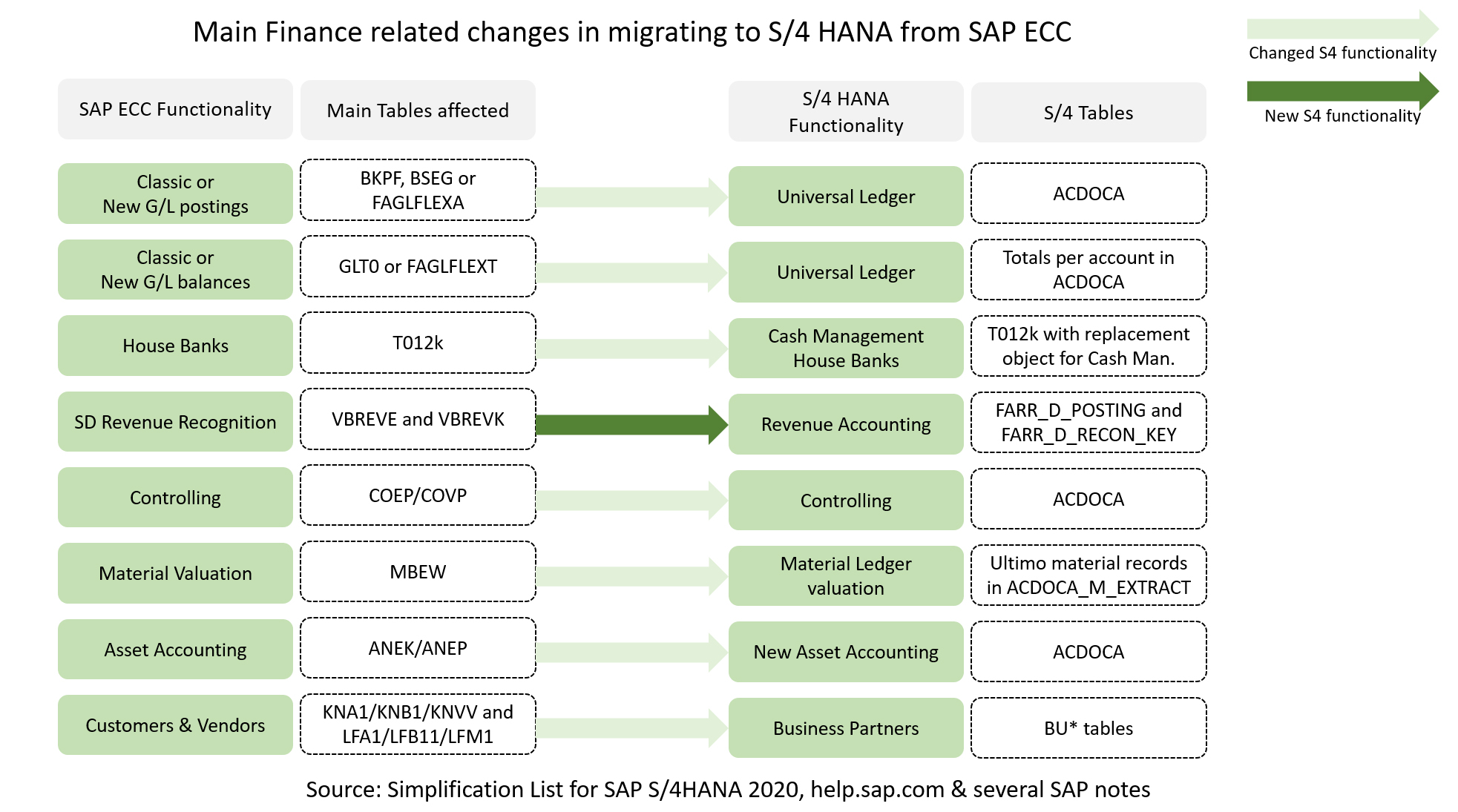
These changes in the underlying SAP S/4HANA data model impacts several aspects of control related work including:
- Data Analysis (for example, Manual Journal reviews due to S/4 Universal Ledger)
- Configuration controls (for example, Credit Management settings due to FSCM Credit Management)
- Financial controls (for example, Revenue Recognition reviews due to S/4 Revenue Accounting)
Recommended Control Steps
When migrating from SAP ECC to SAP S/4HANA, the SAP Software Update Manager (SUM) is available for the technical conversion. Due to the changes in the data models, SAP S/4HANA will have to convert the SAP ECC data into the SAP S/4HANA new data models using SUM. As part of the steps in SUM there are several pre-and-post-conversion checks which are related to the functionality changes in the image above (previous paragraph). Next to SUM, organizations can also use the SAP Readiness Check which includes amongst others a reconciliation analysis that identifies inconsistencies in the General Ledger data.
In addition to the checks performed by SAP SUM and the SAP Readiness check, we recommended performing additional checks included in the tables below. Executing these additional control steps and documenting them will provide you with more assurance to the internal and external stakeholders/auditors.
We will provide you with various better practice pre- and post-conversion checks which can be performed in the current SAP ECC system or SAP S/4HANA. We will also provide some recommended SAP notes to read in case you require more detailed information.
See the tables below:
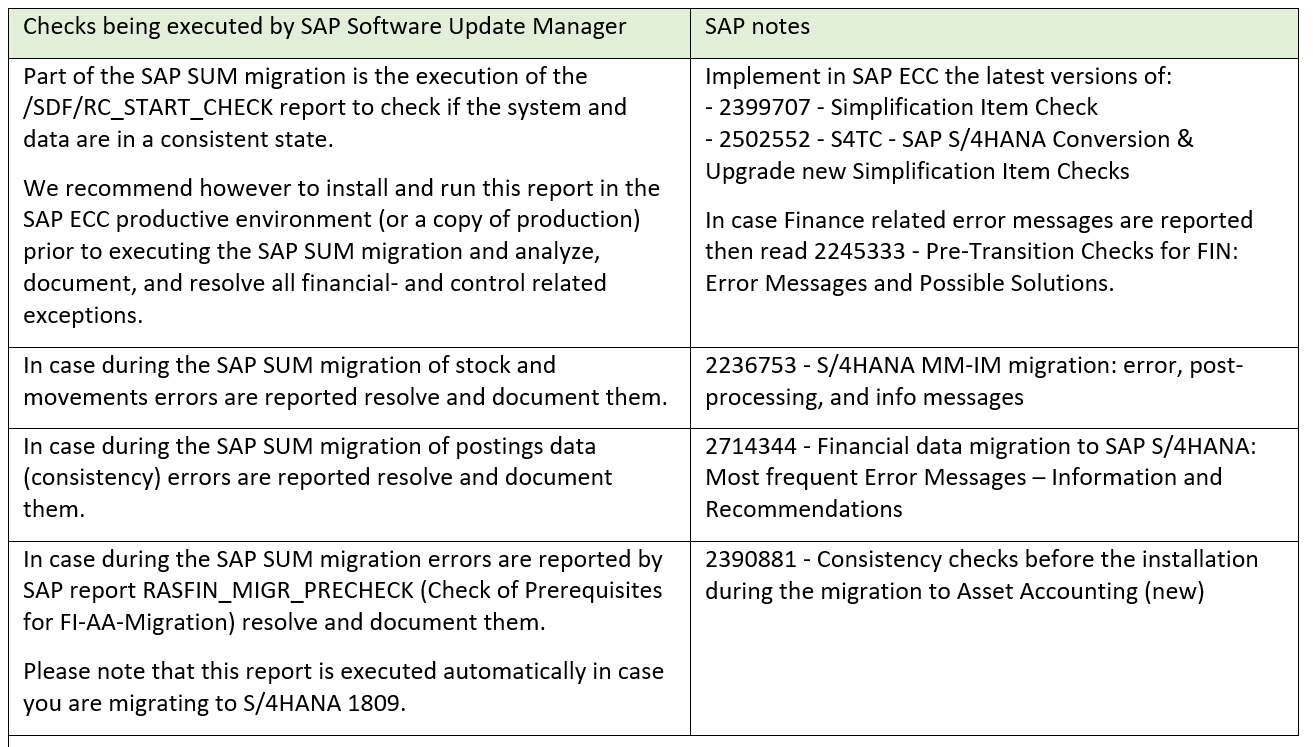
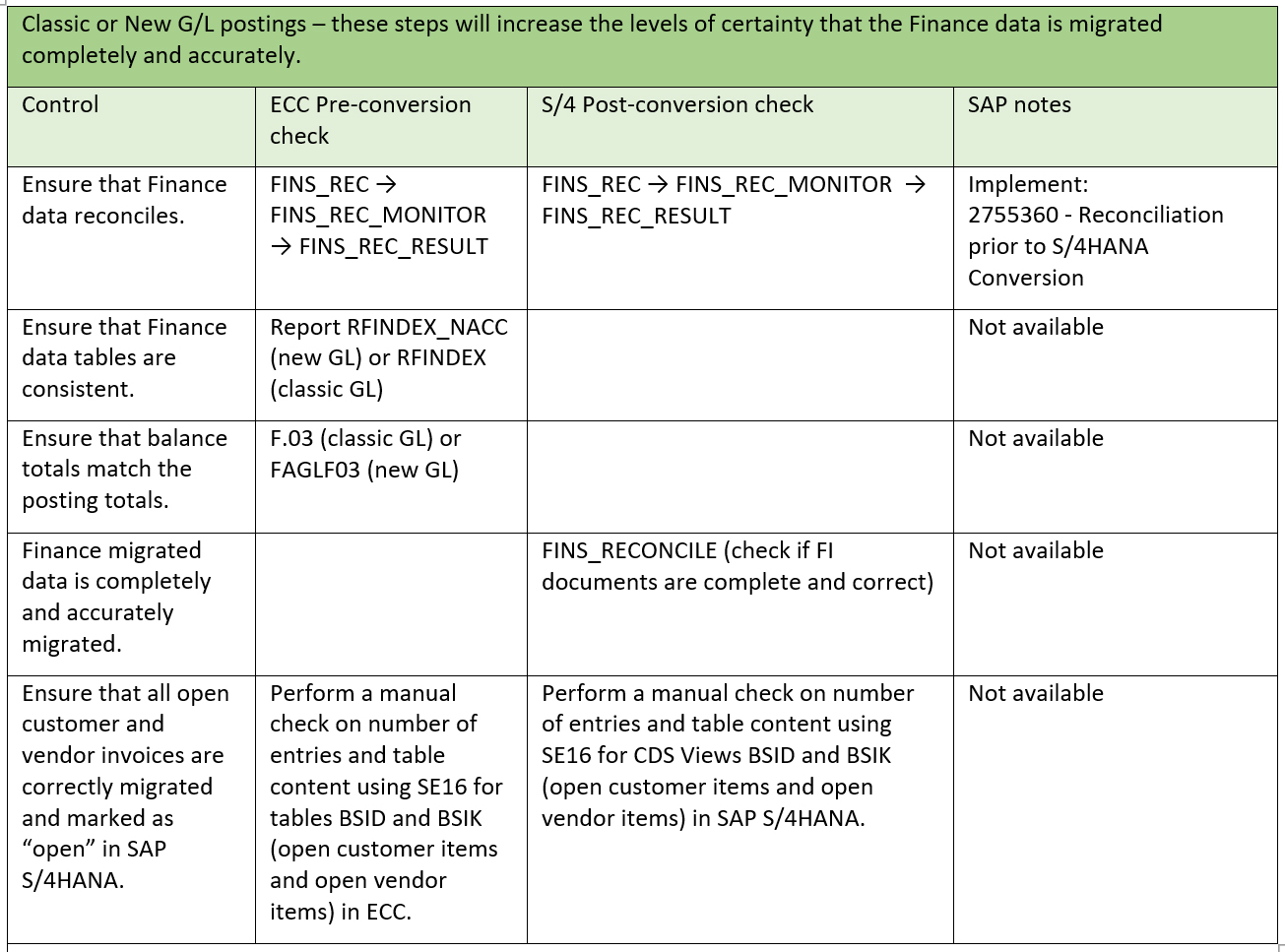
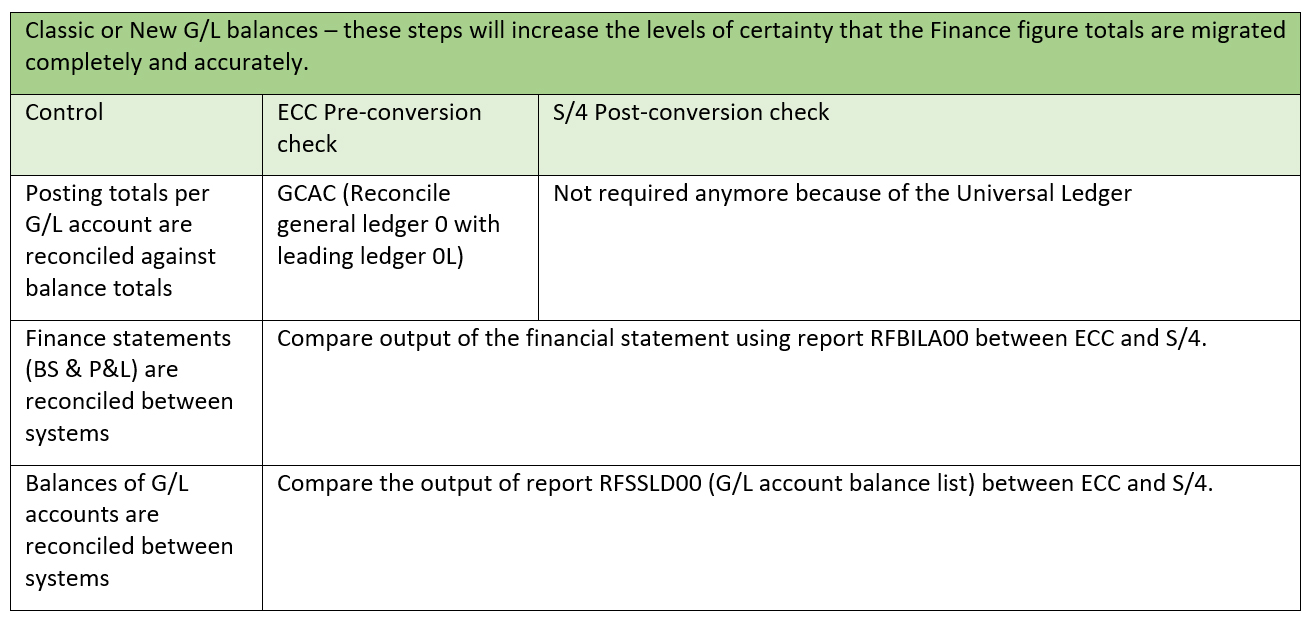
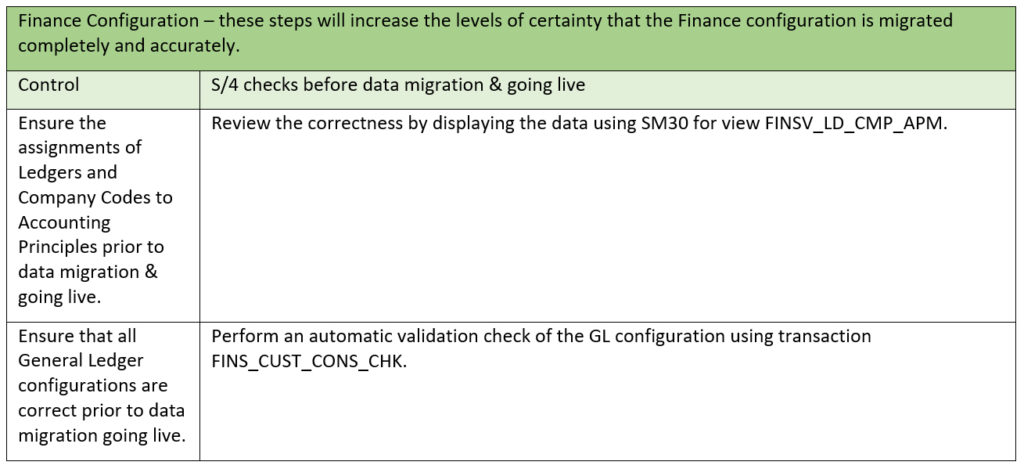


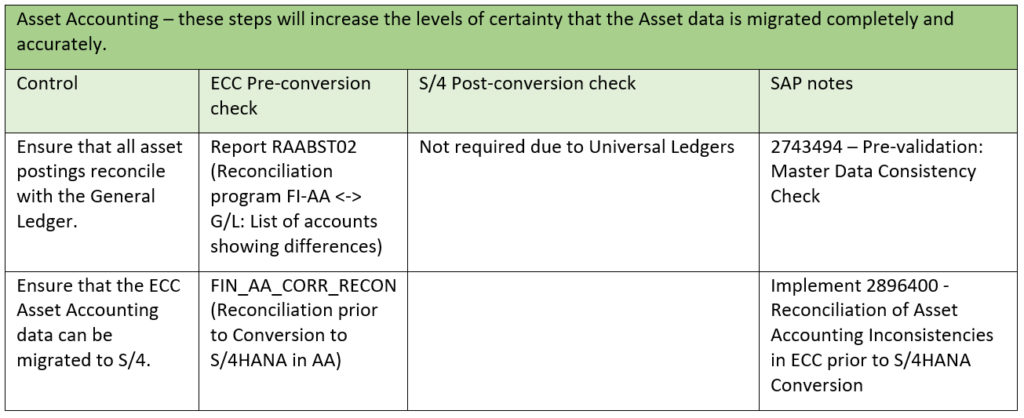
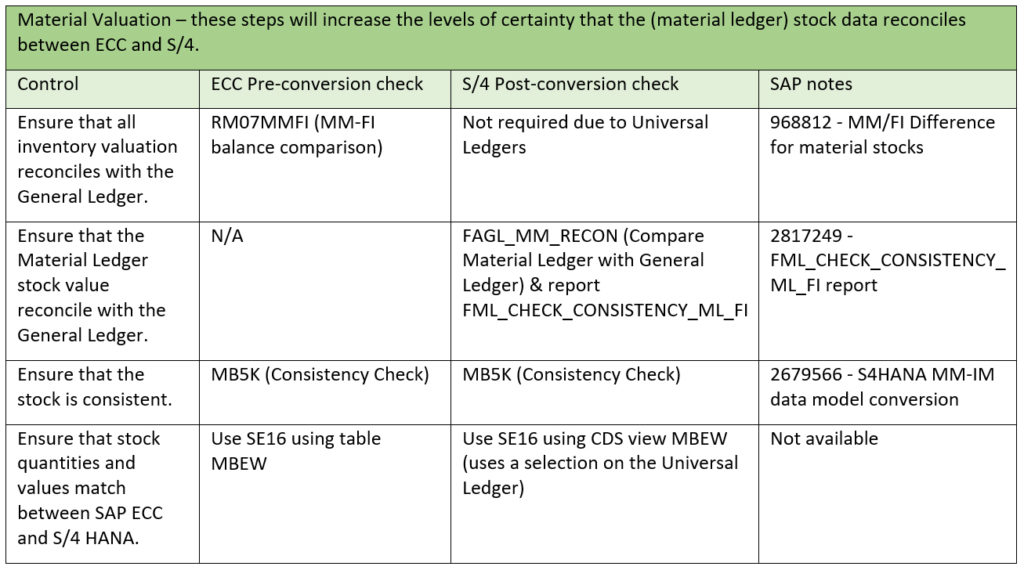
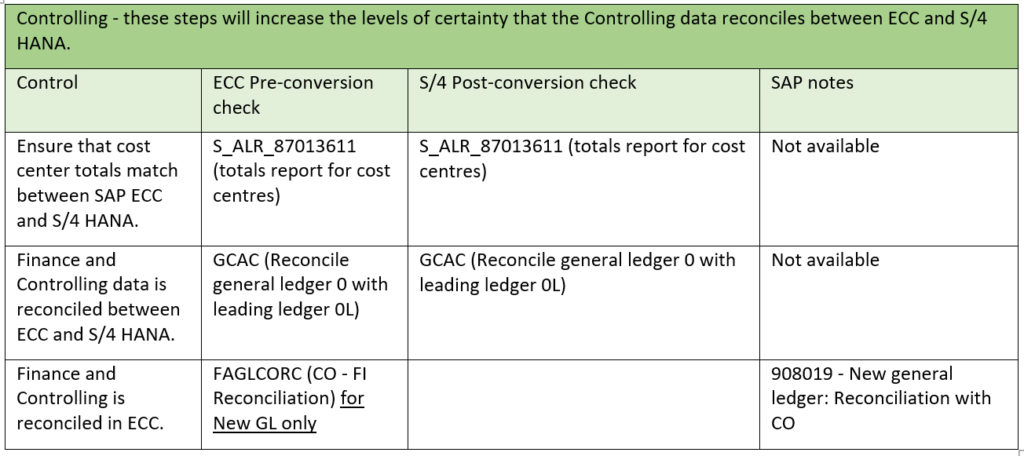
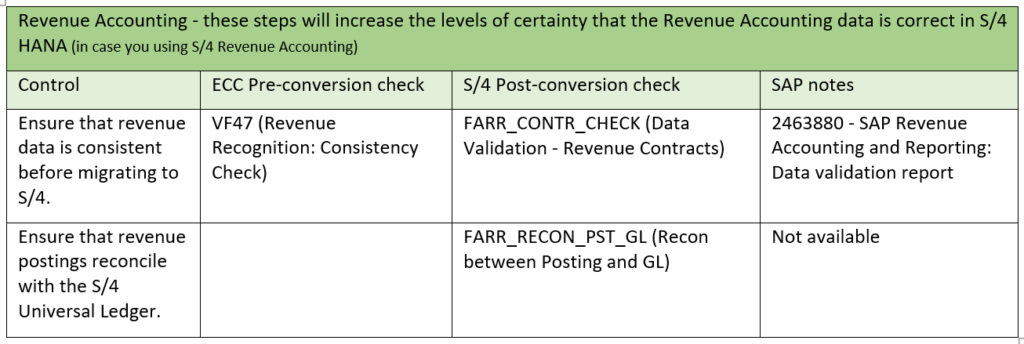
Other Considerations
We recommend that you fully document all exceptions found in both SAP Software Update Manager (SUM) as well as the controls steps you choose from this better practice article. Please be aware that performing the SAP S/4HANA data migration cannot be considered as a technical responsibility only. The data migration has important functional and implications which should be dealt with during migration.
Further Reading
In case you wish to obtain more information on the data migration aspects we refer to the following information and SAP notes (and its attachments) from SAP SE:



